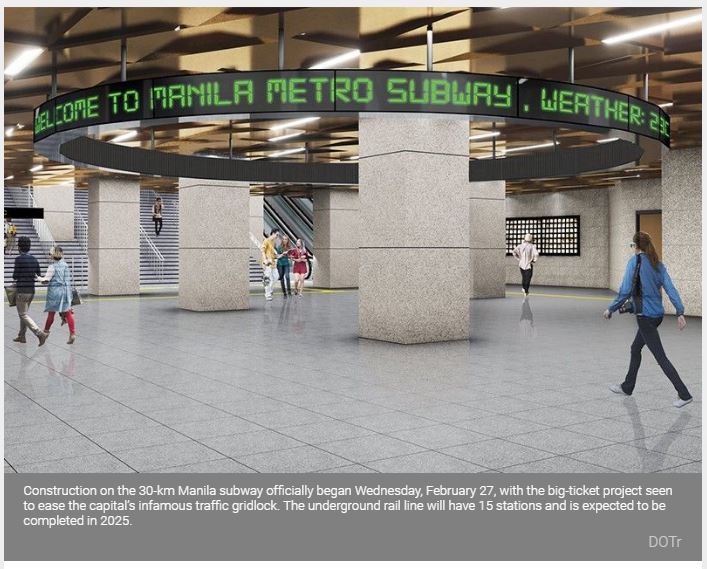First Philippine subway seen pushing up property prices in Metro Manila
MANILA, Philippines — The completion of Metro Manila’s first subway could trigger a surge in property prices in the Philippine capital, with Quezon City seen benefitting the most from the project over the near to medium term, according to real estate consultancy services firm Colliers International Philippines.
Construction on the 30-km Manila subway officially began Wednesday, February 27, with the big-ticket project seen to ease the capital’s infamous traffic gridlock. The underground rail line will have 15 stations and is expected to be completed in 2025.
Meanwhile, a partial operation of the first three stations is set in 2022. Designed to run at 80 kilometers per hour, the subway will reduce travel time from Mindanao Avenue in Quezon City to Ninoy Aquino International Airport — the country’s premier gateway — to about 30 minutes.
In a commentary, Colliers said the subway should help provide access to properties that could be redeveloped into mixed commercial, residential, hotel and institutional projects.
Colliers also sees the project raising the prices of land and properties within a kilometer from the subway’s stations, adding that private developers should take advantage of the government’s infrastructure push.
“Colliers believes that working with the national government for the development of commercial and residential buildings around the stations of the Manila Subway is a practical route for property developers given the lack of developable land in the country’s capital,” the consultancy firm said.
“In our opinion, this option is something that the government should seriously consider given its goal of raising additional revenues to fund its massive social and infrastructure programs, especially now that the remaining tax reform measures have yet to be passed in Congress,” it added.
“This way, the government gets additional revenues crucial for its ‘Build, Build, Build’ program and spurs more business activities in the newly-established business districts, which should eventually generate more jobs and tax revenues.”
In March 2018, Finance Secretary Carlos Dominguez III and Japan International Cooperation Agency Chief Representative Yoshio Wada inked the first tranche of a loan deal for the initial phase of a 30-km underground railway, which is estimated to cost P356.96 billion.
According to Dominguez, the plan for the subway line envisions a “north zone” that will extend to Bulacan and a “south zone” that will stretch to Cavite.
The flagship infrastructure project will have commercial spaces that will be leased to help pay the hefty Japanese loan and defray the cost of operating the facility.
A recent study by JICA found that road congestion in Manila cost the economy P3.5 billion daily in 2017.
In the same commentary, Colliers said Quezon City could gain from the planned subway as seven of the 14 stations would be developed within the city.
“With improving connectivity given the construction of Manila Subway, MRT-7 and the common LRT-MRT station, we see Quezon City becoming more attractive for mixed-use projects that feature office, residential, and retail projects,” Colliers said.
“Among the stations well suited for townships is North Avenue given its interconnection with other mass transportation systems,” it added.
“We see Quirino and Tandang Sora stations providing residential support to offices in the North Avenue station. The latter is also a practical choice for hotel projects as we see it capturing demand from Northern Metro Manila and nearby provinces such as Bulacan.” — Ian Nicolas Cigaral
Source: https://www.philstar.com/business/2019/02/27/1897210/first-philippine-subway-seen-pushing-property-prices-metro-manila#g0ZfUsrr4SQCmZBp.99


 English
English




